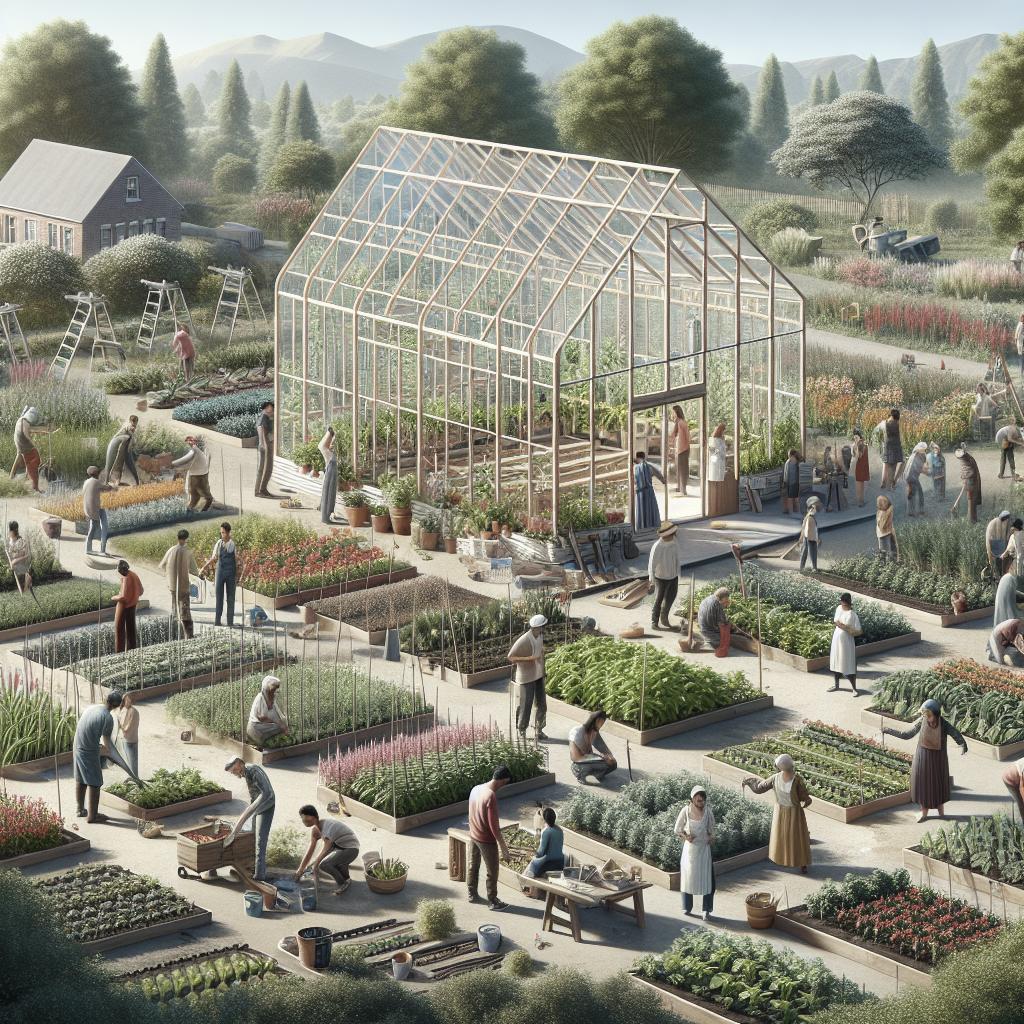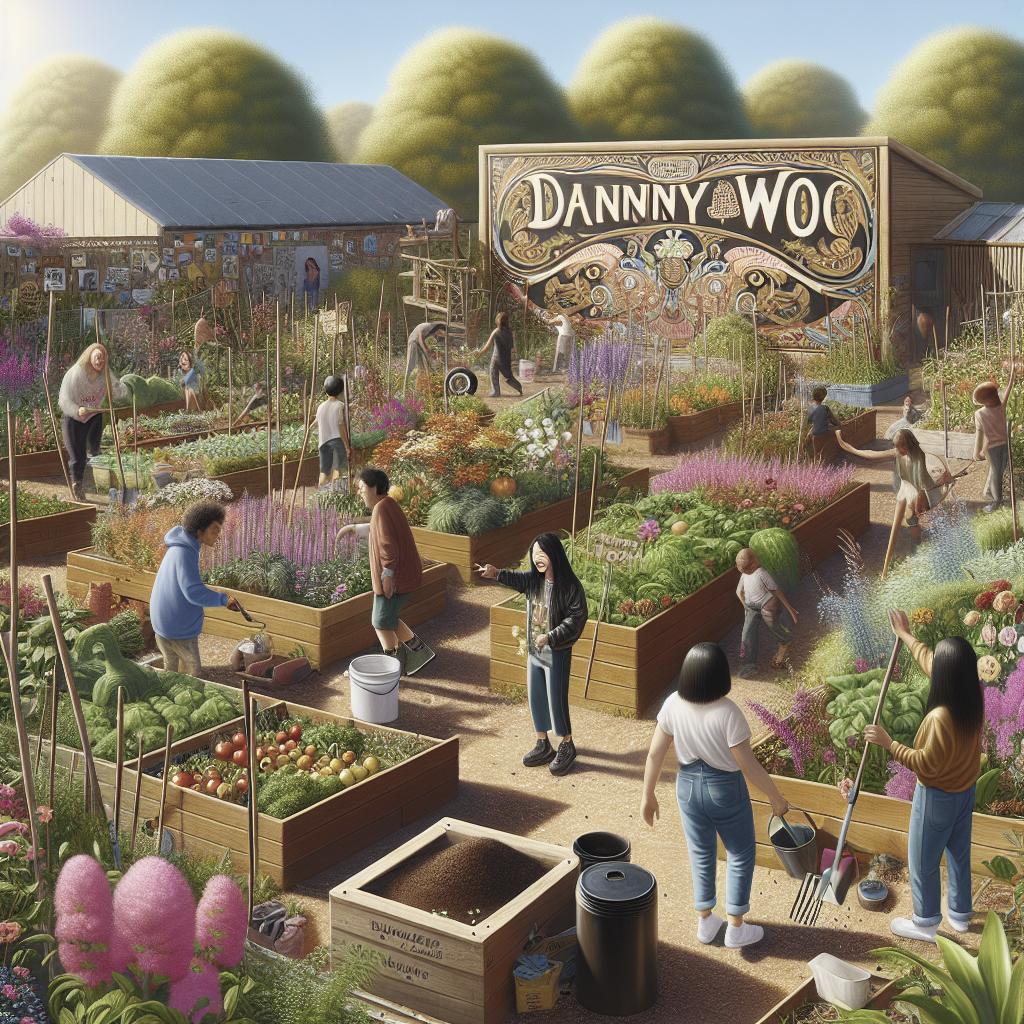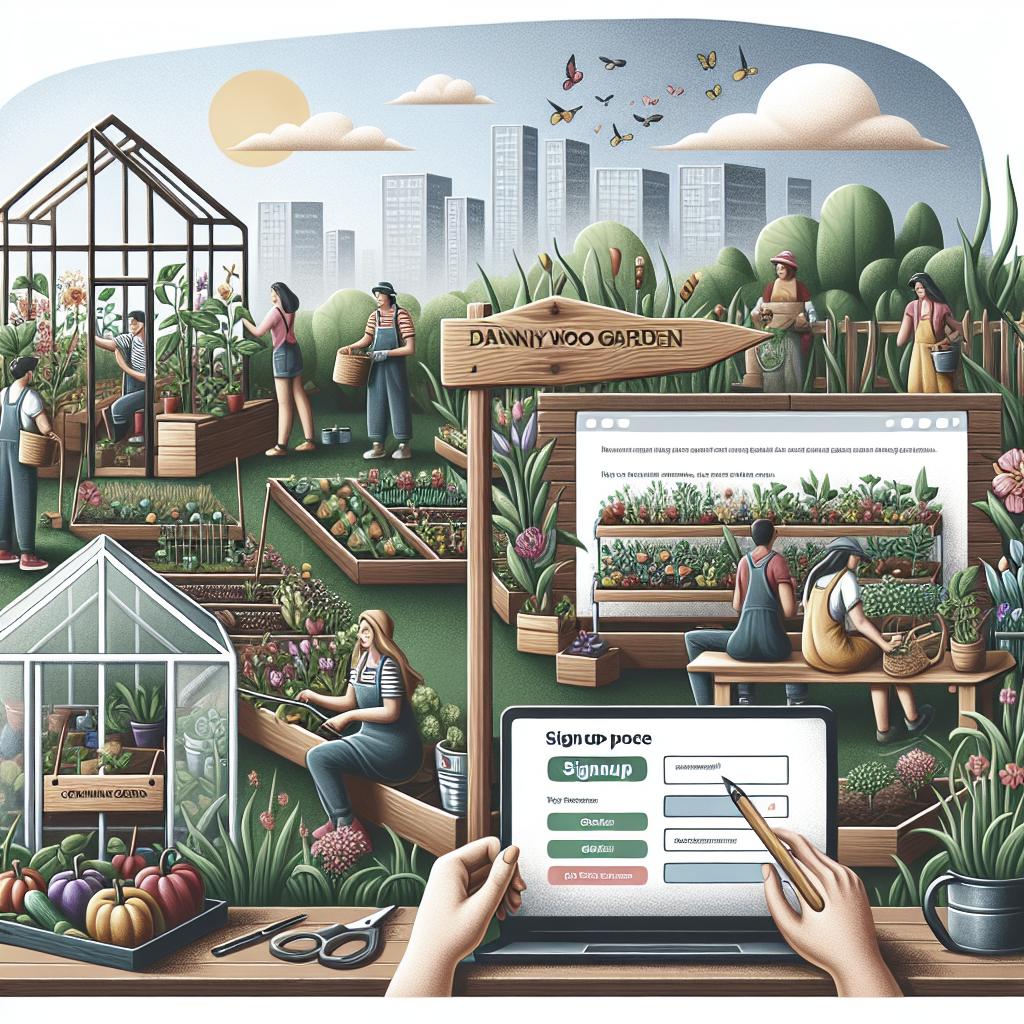Community gardens are wonderful spaces where neighborhoods come together to grow fresh produce, share gardening tips, and build stronger relationships. One way to enhance your community garden is by adding a greenhouse. This structure can extend the growing season, protect plants from harsh weather, and provide a controlled environment for special crops. Building a greenhouse may seem daunting, but with community effort and proper planning, it becomes an achievable and rewarding project. This blog post breaks down the steps necessary to start a community garden and includes specific guidance on constructing a greenhouse within that garden, ensuring your community can reap the benefits for years to come.
What Is a Community Garden?
A community garden is a shared space where individuals from a neighborhood or town collaboratively manage plots of land to grow fruits, vegetables, herbs, and flowers. These gardens can be found in urban, suburban, and rural areas and serve as a communal resource for fresh produce and beautification.
Community gardens provide access to green space, especially in densely populated urban areas where personal green spaces are limited. They offer a sense of ownership and responsibility to participants while fostering social interaction, education, and community spirit. These gardens are as much about growing relationships as they are about growing plants.
Why Start a Community Garden?
Starting a community garden brings numerous benefits, both to individuals and the community as a whole. For individuals, gardening offers physical exercise, mental relaxation, and an opportunity to learn new skills. Nutritionally, it provides access to fresh, healthy produce, often at a lower cost than grocery stores.
For the community, gardens enhance green spaces, promote environmental sustainability, and can even reduce crime rates by fostering neighborhood pride and vigilance. Additionally, they create opportunities for community engagement, where members can collaborate, share knowledge, and support each other in achieving common goals.
Steps to Starting a Community Garden
1. Find Available Land
Finding the right location for your community garden is critical. Consider vacant lots, underused municipal land, parts of parks, or even schoolyards. When choosing land, ensure it gets sufficient sunlight, has access to water, and isn’t contaminated by pollutants.
Once you have identified a potential site, you may need to contact the landowner or local authorities to obtain permission to use the land. Some cities have programs that support the development of community gardens, making this process easier.
2. Engage Your Community
Community support is the backbone of a successful community garden. Engage local residents by hosting informational meetings, distributing flyers, or utilizing social media to spread the word. Gather input on what the community wants and needs from the garden.
Form a garden committee comprising enthusiastic and committed members. This group will help make decisions, spread responsibilities, and ensure the garden’s success. Remember, the more inclusive the process, the more support and involvement you’ll receive.
3. Find Resources to Support Your Community Garden
Resources are essential to get your garden up and running. Seek grants from local governments, nonprofits, or businesses. Many organizations are willing to provide financial assistance, tools, seeds, and plants.
Partnerships with local businesses, schools, or horticulture groups can also provide invaluable support. Volunteers can offer their time and labor, while donations can include everything from garden tools to compost and seedlings.
4. Decide What to Plant in a Community Garden Plot
Deciding what to grow in your community garden depends on several factors, including the preferences of participants, local climate, and soil conditions. Conduct a survey to gather input on what community members want to grow.
Begin with easy-to-grow crops, like tomatoes, lettuce, and herbs, to ensure early success and encourage participation. Consider dedicating sections of the garden to flowers and pollinator plants to attract beneficial insects and beautify the space.
5. Prep and Build the Site
Preparing the garden site requires several steps. Clear the area of debris, rocks, and weeds. Test the soil for pH and nutrient levels, and amend it as necessary to build healthy, fertile grounds for planting.
Create garden plots, pathways, and communal areas like composting stations and shaded seating. Install fencing, if necessary, to protect from animals and unapproved harvesting. Lastly, plan for irrigation by installing a watering system or setting up rain barrels.
6. Determine Rules and Put Them in Writing
Establishing rules ensures your community garden operates smoothly and fairly. Define plot allocation, maintenance responsibilities, harvesting guidelines, and acceptable behavior. Clearly communicate expectations to all participants.
Put these rules in writing and distribute them to all members. Regularly review the guidelines with the committee to address any issues or improvements. A transparent, well-organized system will foster trust and cooperation among gardeners.
7. Maintain and Grow Your Community Garden
Maintaining the garden is a shared responsibility. Organize regular workdays and encourage members to attend. Rotate tasks to prevent burnout and ensure everyone contributes to the garden’s upkeep.
Plan events and workshops to keep the community engaged and enthusiastic. Celebrating achievements, hosting potlucks, and organizing educational sessions can keep the spirit of the garden alive and thriving.
Learn More About Gardening with a Horticulture Degree
If you’re passionate about gardening and want to deepen your knowledge, pursuing a degree in horticulture could be a great next step. Horticulture programs cover a wide range of topics, including plant biology, soil science, pest management, and landscape design.
These programs provide hands-on experience and a scientific understanding of plant cultivation, which can be invaluable when managing a community garden. Additionally, they can open career opportunities in landscape architecture, greenhouse management, and environmental conservation.
Lessons Learned
| Topic | Key Points |
|---|---|
| What Is a Community Garden? | Shared space for collaborative gardening, fostering social interaction and education. |
| Why Start a Community Garden? | Provides fresh produce, physical exercise, and enhances community engagement. |
| Steps to Starting a Community Garden | Find land, engage community, secure resources, decide on plants, prep and build site, determine rules, maintain garden. |
| Learn More About Gardening with a Horticulture Degree | Enhances knowledge in plant biology, soil science, pest management, and offers career opportunities. |


